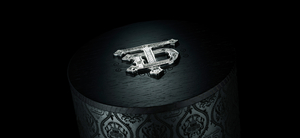To show you what I mean, let me - without a showing a single screenshot - describe the three typical kinds of whisky sites:
1. "We’re a Whisky, and we have a special story."
Yes, you may have a special story - but you’re going to have trouble exploring that when everyone else has a special story, too. That’s the thing about whisky; it’s made the same way, no matter where you make it. So, it’s hard to build upon having the cleanest water/purest malt/hairiest man in the village to lift out of the basic manufacturing story when a load of other whisky brands are playing the same game. Here’s a fun exercise: take a whisky website and swap the logo from that brand with another and see if it feels right. (Spoiler: it’ll feel fine. They’re usually interchangeable).
2. "We’re a lifestyle brand that sells a whisky."
You have no story. You’re distilled in a grim business park somewhere in Scotland’s industrial central belt. You may have a heritage story, but it’s shallow. What is a brand to do? Chuck money at it, of course. First, hire a film director with a reasonable CV to create a brand movie, which is around 8 minutes and has a solid lead actor whose name was in smallish print on the poster for last year’s Marvel blockbuster. Usually (but not always) the drink has little to do with the film, but - sweet Jesus - it’ll get the viral hits on the YouTubes because of cars and hills and cars and, if the budget stretches, maybe a boat like the ones from Miami Vice. Don’t forget; you need to pay the big bucks to promote your viral hit to make it viral. But, no bother, you’re relevant. Boom! Rinse and repeat.
3. "We’re a whisky that wants to be a lifestyle brand."
You sell good whisky, you don’t have a global budget, and you’re being pushed to sell your "Loch Whit-Ever" whisky driving gloves. Because, like, diversification. So, let’s start by getting some amazing renders of the bottles, mind-blowing shots of pictures of brown liquid in lovely glasses with ice. Then we’ll tell you how to make a whisky cocktail like you’re a young David Niven. Big pictures, little text. And a social wall, because we’re skating to where the puck is. And who doesn’t love having big bottle renders pushed to you when you’re looking at pictures of your mate’s arse on Facebook? You’ll have that “Loch Whit-Ever”/Samsonite brand tie-up done in no time at this rate.
If you’ve made it this far, you’ll be asking yourself, “Hey, Fatboy! What’s your big idea?”. Here are my top tips:
1. Whisky brand, know thyself
It’s all about your brand, all about your values, all about why you’re doing it and who you’re doing it for. It’s not about the most excellent ingredients, it’s about what drives you to get those ingredients. It’s the simple truth of what inspires you to make the best whisky that you can. You need to articulate that as directly as you can, share it, and only then look at the Internets.
2. There is no U in “Whisky” on the digitals
The best experiences online are well-considered services. Customer-focused services. And this is (relatively) easy if you’re an Uber or an Amazon, but how does it work for a company distilling the water of life? Not got a clue - it comes from who you are, not what you’re doing. It’s not easy. Offline, it’s been easy. It’s been brand building through association. Music sponsorship was the big one. So was sponsoring the arts. And it worked. But that approach doesn’t translate well online, which is less about who you are, and all about what you can do for your customers.
3. If you really have to use your heritage, bring it up to date
Yup, we get that whisky is an ancient craft, drank in bothies with the purple heather rolling down the glens. But Thor and Wren are drinking it now in a Sky Garden in the heart of the throbbing metropolis surrounded by all the beautiful people, all of them. What part of your heritage relates to the here and now? Build on your past, don’t live off it. But for the love of the malted barley, don’t brief your agency that you’re looking for “Traditional Modernity” because they’ll kill you. In their heads. And then take your money anyway.
4. Join it all up
Most of what I’ve put forth could be equally applied to the brand offline. I know that. And that’s the point - it shouldn’t just look the same, it needs to feel the same.
Let’s not beat around the bush - this is hard. Creating a meaningful experience online for an activity which is distinctly offline is hard. How can looking at a website or interacting with a tweet even begin to compare with supping on a glass of your favourite tipple?
So, look at your brand values and understand how they can enrich the lives of your customers, even in the smallest of ways. Look at providing the gentlest of services, little moments of delight that will make people look at the brand with some slight fondness when they’re scanning the gantry for their next tipple. It may be enough to move them from 'interested' to 'purchase'.
We love this kind of challenge. Get in touch if you’d like to spend a couple of hours chatting about the possibilities.
